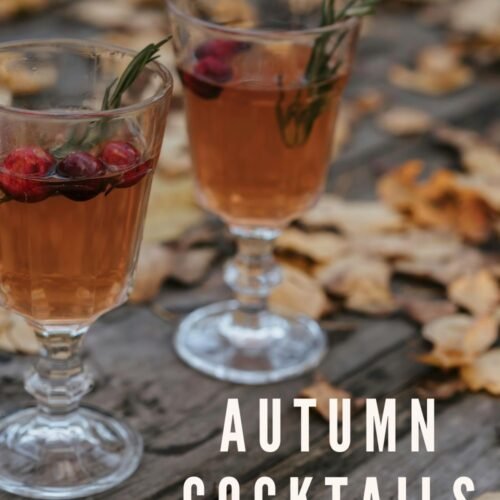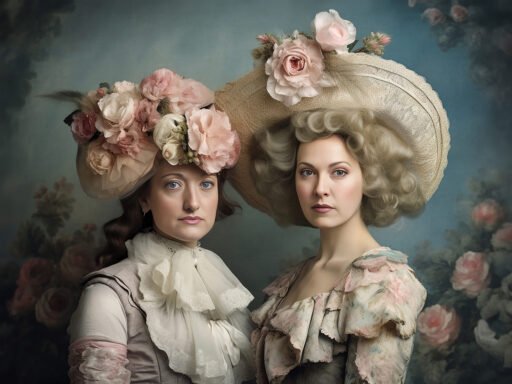This post may contain affiliate links — meaning we get a commission if you decide to make a purchase through our links, at no cost to you. We carefully curate our affiliate partnerships and only work with companies we like and believe in. Earning commissions like this helps us sustain our blog but the opinions we share are always our own.
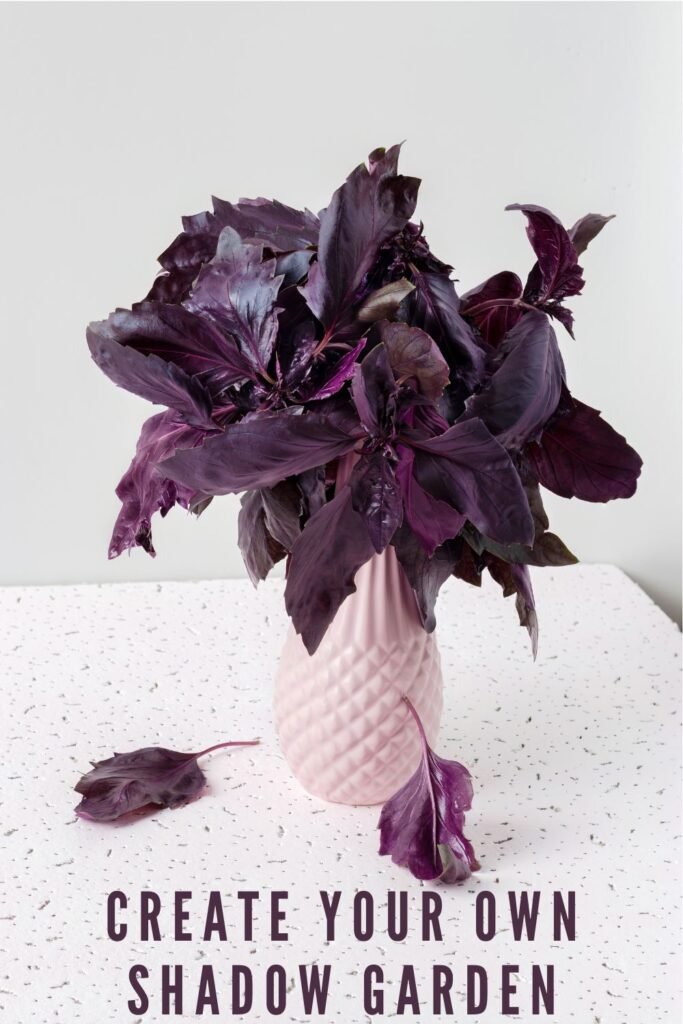
How to Create Your Own Shadow Garden (Inspired by In the Shadow Garden by Liz Parker)
By Nicole Danielle

On our podcast, Romance on the Rocks, I recently reviewed In the Shadow Garden by Liz Parker (Season 2 Episode 21: I’m Also in Love with Mothman). In the book, the mystical “shadow garden” is filled with fruits, herbs, flowers, and vegetables that take on a dark, mysterious beauty. Their blooms, fruits, or foliage all carrying shades of black, deep purple, or inky blue or green.
As a passionate gardener, reading about it got me thinking: what if you could create your own shadow garden at home? A space that feels both magical and moody, lush with plants that thrive in deep, dark tones. Below, I’ve rounded up suggestions for plants across categories (fruits, herbs, flowers, and vegetables), along with trusted sources where you can find them.
Bulbs
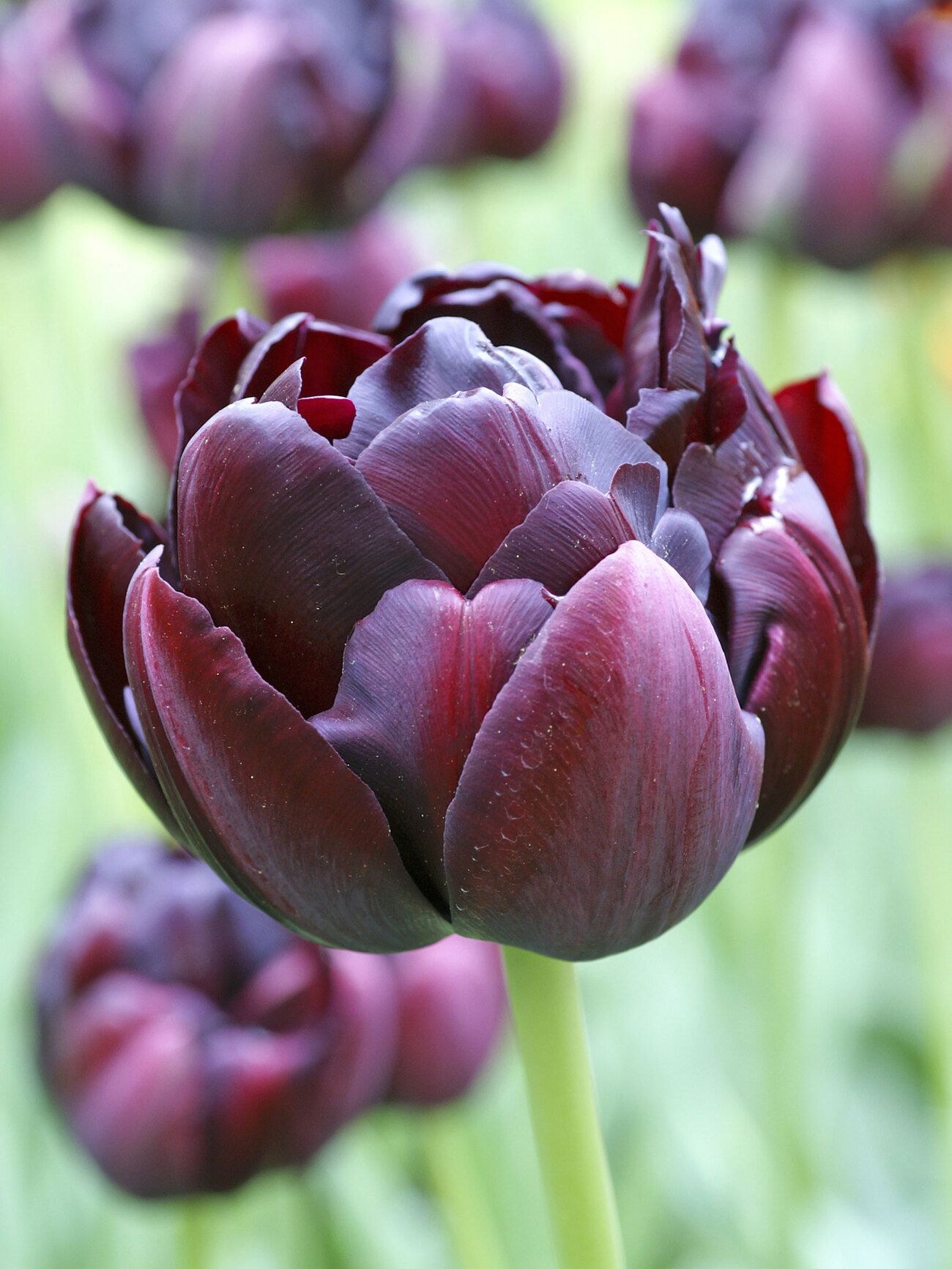
- Tulip Black Hero — A dashing, dark and handsome Double Late Tulip that can look black in lower light and shadows. Source: Bluestone Perennials
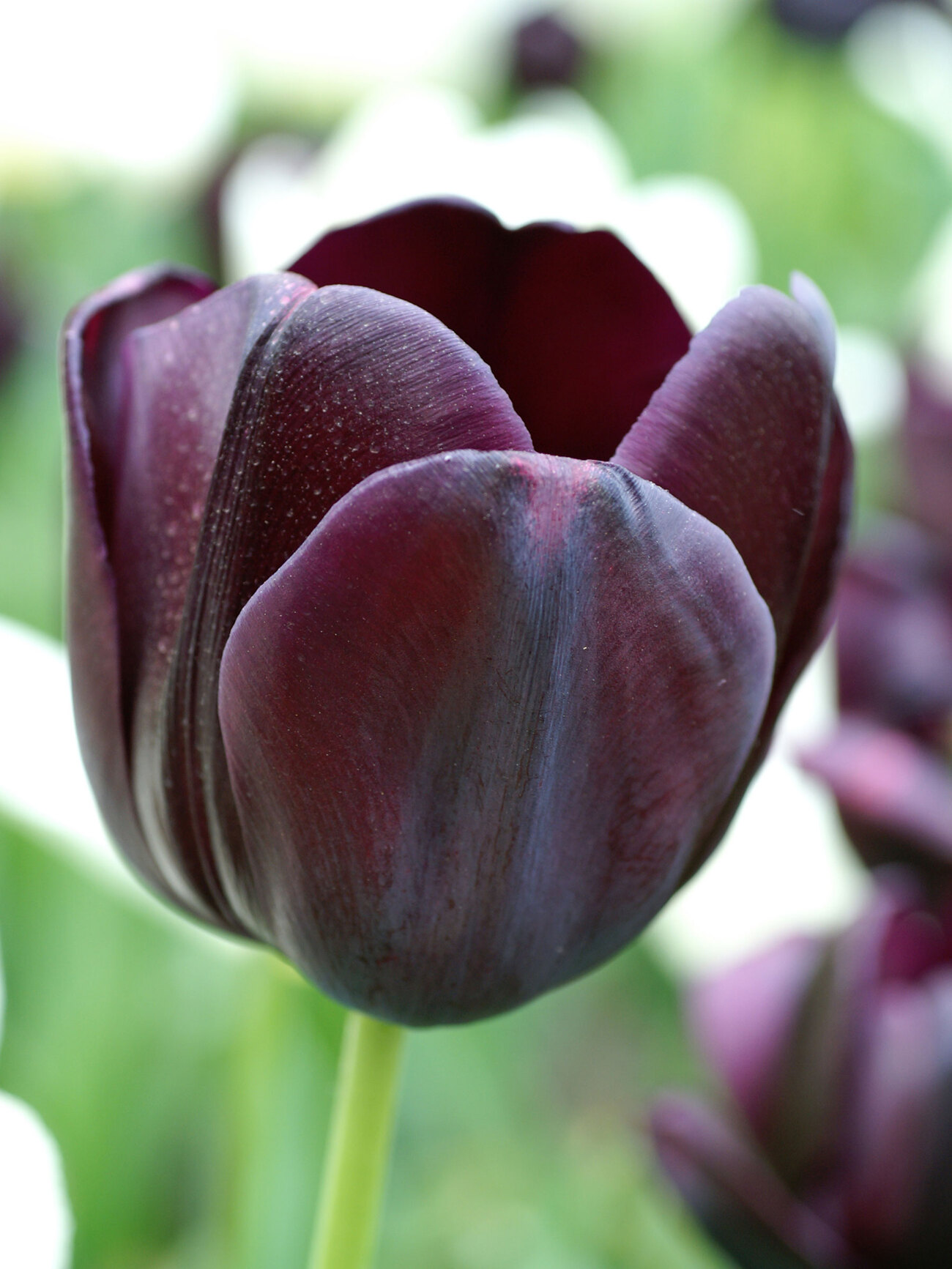
- Tulip Queen of the Night — Velvety dark purple flowers almost look black. Sources: Bluestone Perennials
Fruits

- Beer’s Black Fig Tree — Rich, sweet, buttery unctuousness so sought after in a great fig. Source: Stark Brothers
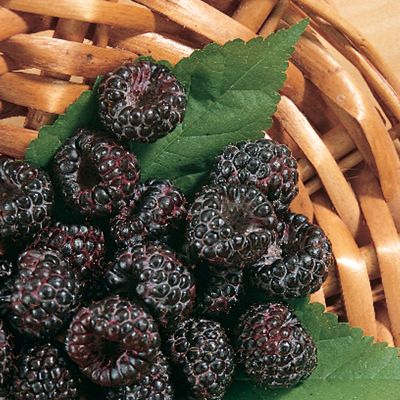
- Jewel Black Raspberry — High-quality, glossy black fruit on sturdy, upright canes. Source: Stark Brothers
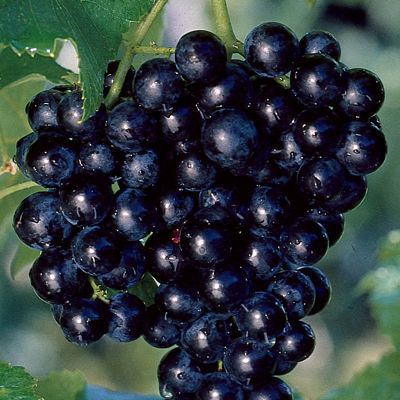
Cowart Muscadine Grape – Succulent bunches of blue-black, seeded grapes. Source: Stark Brothers

- Black Cherry Tomato — True cherry tomatoes that are deep red with a blackish hue. Source: Burpee

- Queen of the Night Tomato — Round, richly colored fruits of German heirloom Tomato ‘Queen of the Night’ begin black as coal then ripen to vivid orange-red orbs with jewel-tone highlights of gold and amethyst and dark inky patches at their bottoms and tops. Source: White Flower Farm

- Black Beauty Eggplant — Over 100 years old, this 1902 Burpee introduction was an immediate hit because the plants ripened perfect fruits dramatically earlier than other varieties. Source: Burpee

- Nocturne Blueberry Plant — Abounding with delicious, vivid orange fruit that transitions to luscious, dusky black. Source: Burpee
Herbs

Purple Basil – Striking, almost-black foliage with classic basil fragrance. Source: Eden Brothers
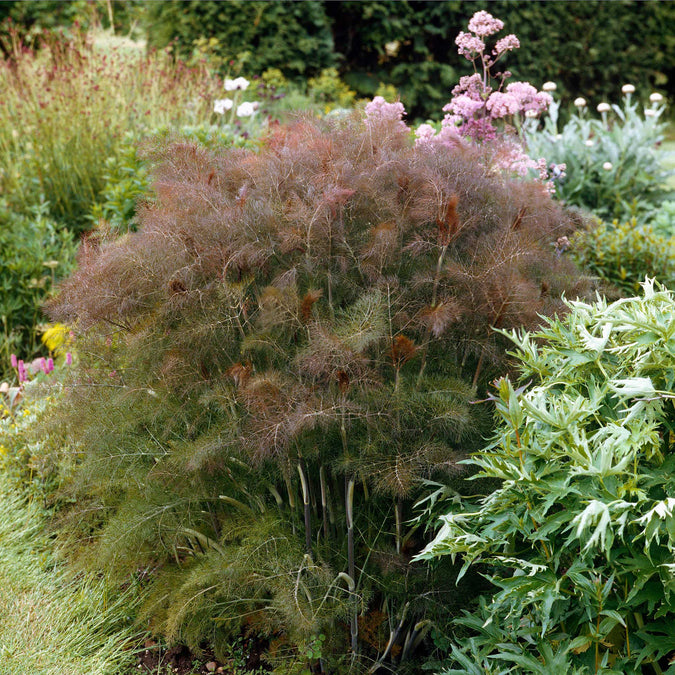
- Smokey Bronze Fennel — The entire plant is edible and, added bonus: it’s a host plant for black swallow-tail butterflies! Source: Eden Brothers
Flowers

- Iris chrysographes — The allure of black flowers is captivating, and the deepest indigo-violet flowers of this Siberian Iris, Iris chrysographes, are so dark that they really do seem black. Source: White Flower Farm

- Sorbet Black Delight Viola — Dainty and dramatic cool-season charmer with velvety black blooms kissed with golden hearts. Source: American Meadows
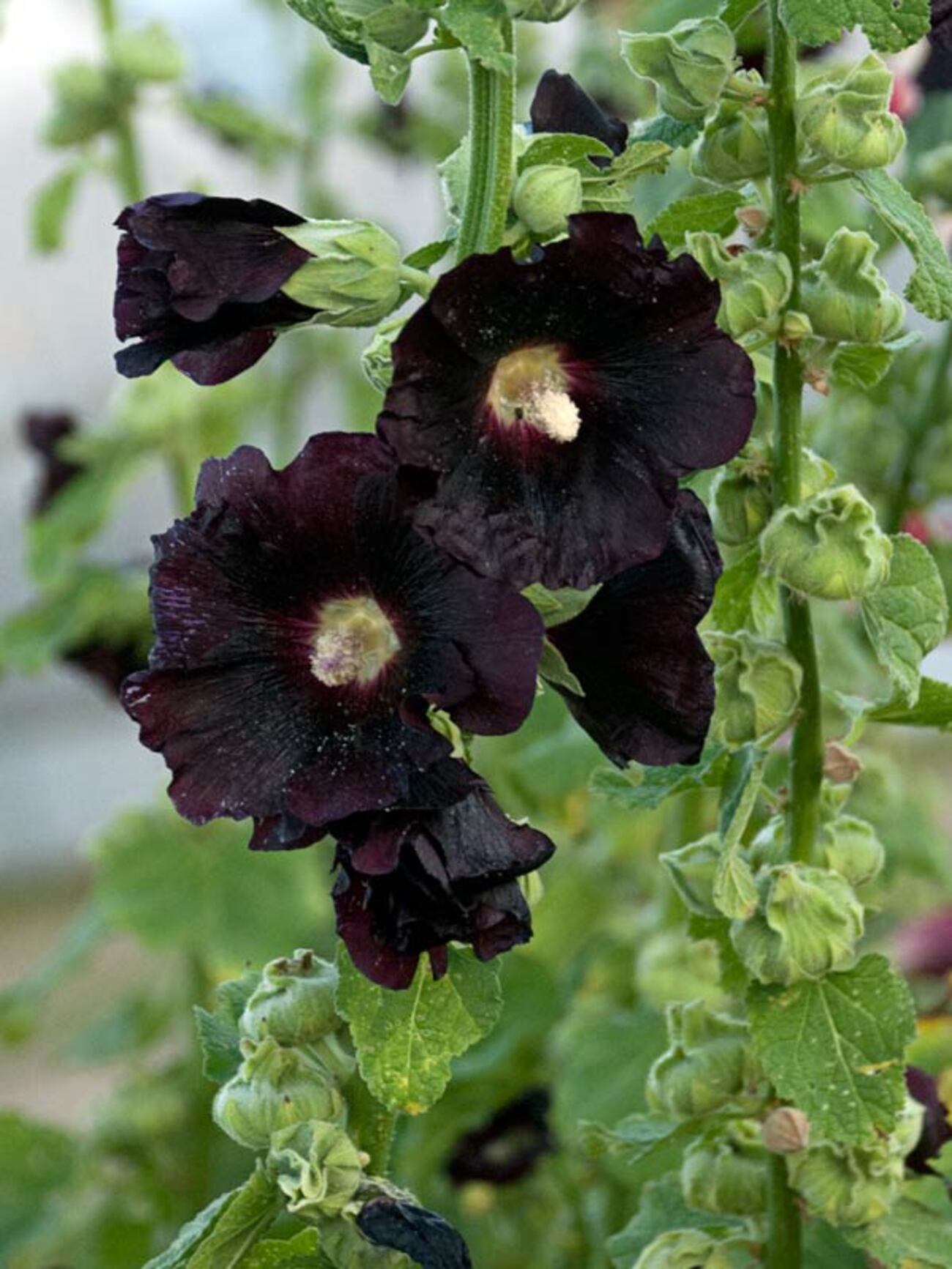
- Hollyhock Blacknight — Numerous single-style blooms cover each tall flower spike towering over strong bushy foliage. The color is deepest black/purple. Source: Bluestone Perennials
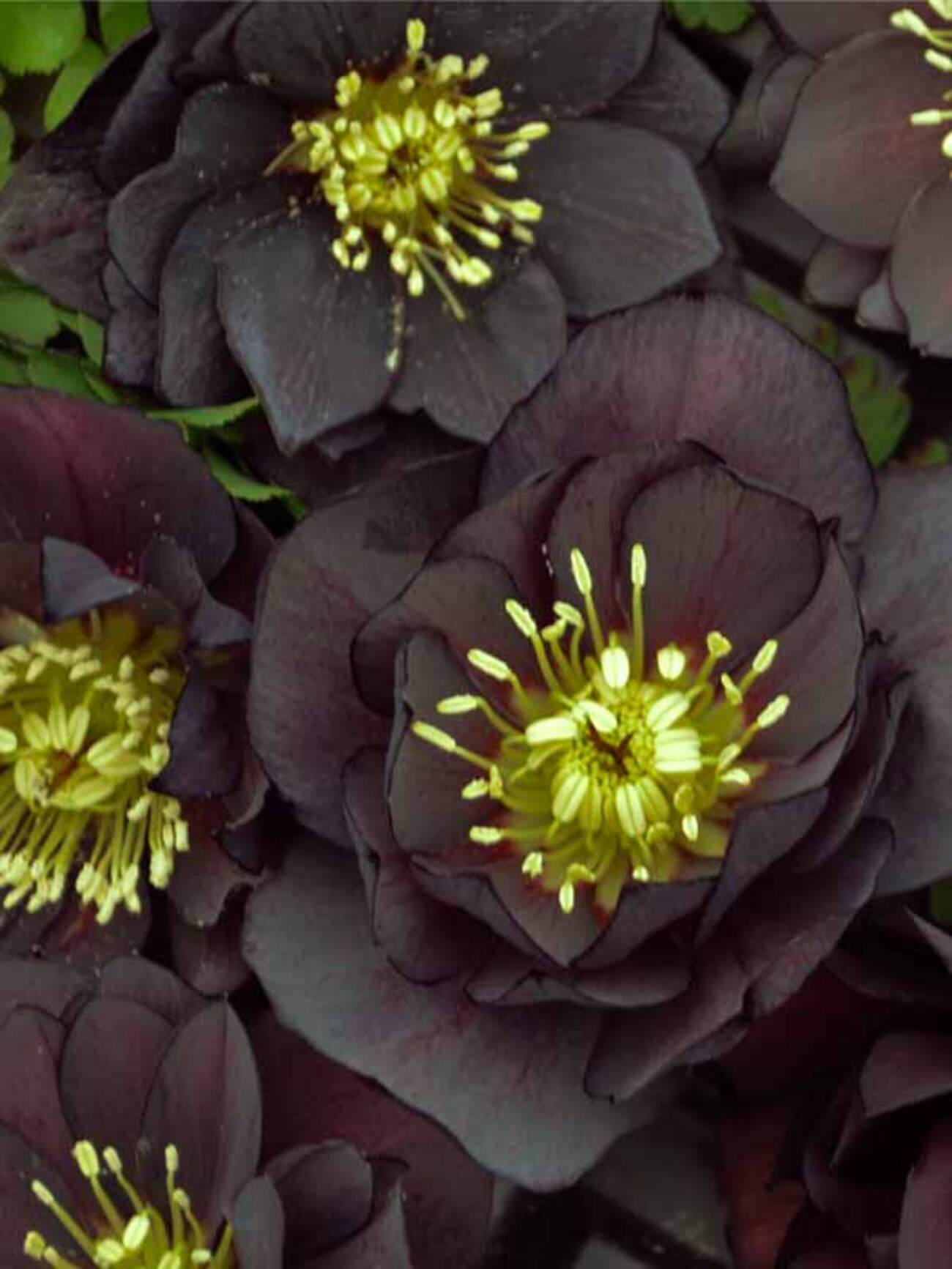
- Helleborus Dark and Handsome — Sharply dressed in silky, near black to black-purple. Source: Bluestone Perennials
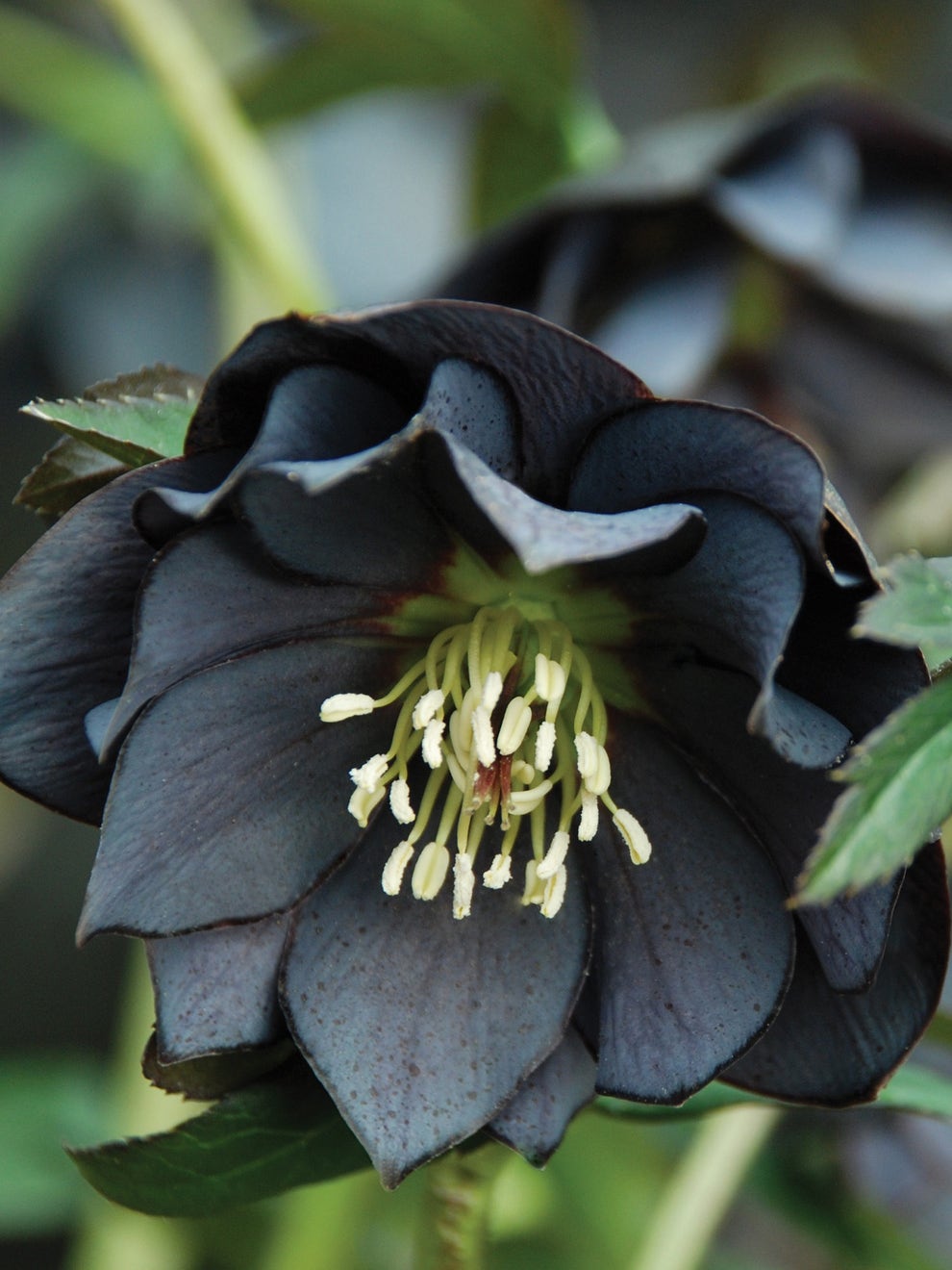
- Onyx Odyssey Hellebore — The full double blooms are intensely purplish-black. Source: Burpee
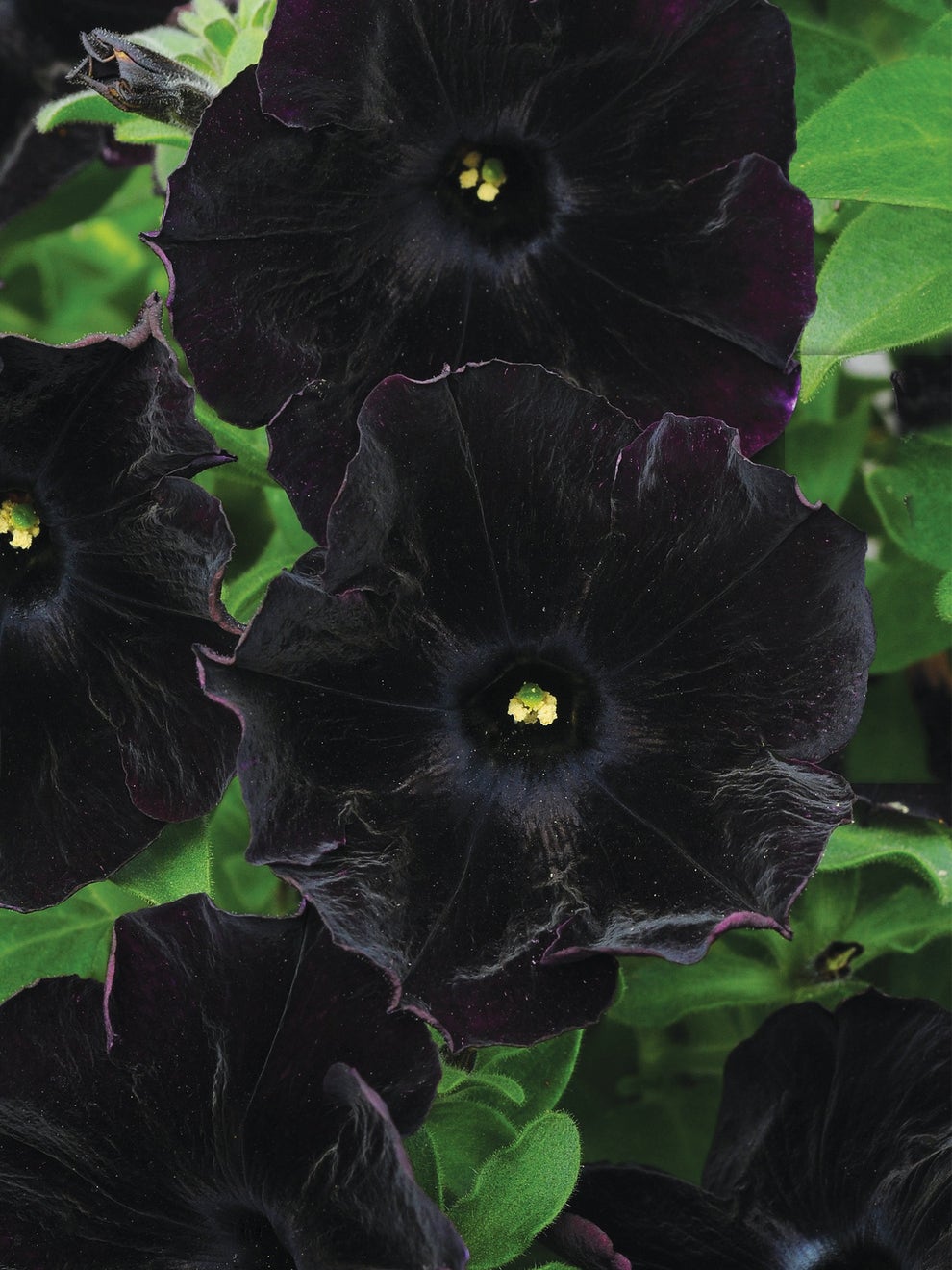
- Black Cat Petunia — Purring beauties of ‘Black Cat’ petunia add welcome texture and depth to the border all season through. Source: Burpee
Vegetables

- Black Spanish Round Radish — Black radishes have been grown and savored in Europe since the 1500s. Source: Burpee

- Purple Majesty Potato — Deep purple color and sweet, buttery flavor. Source: Burpee

- Pole Purple King Bean — Beans that yield steadily all summer until frost. Source: Burpee
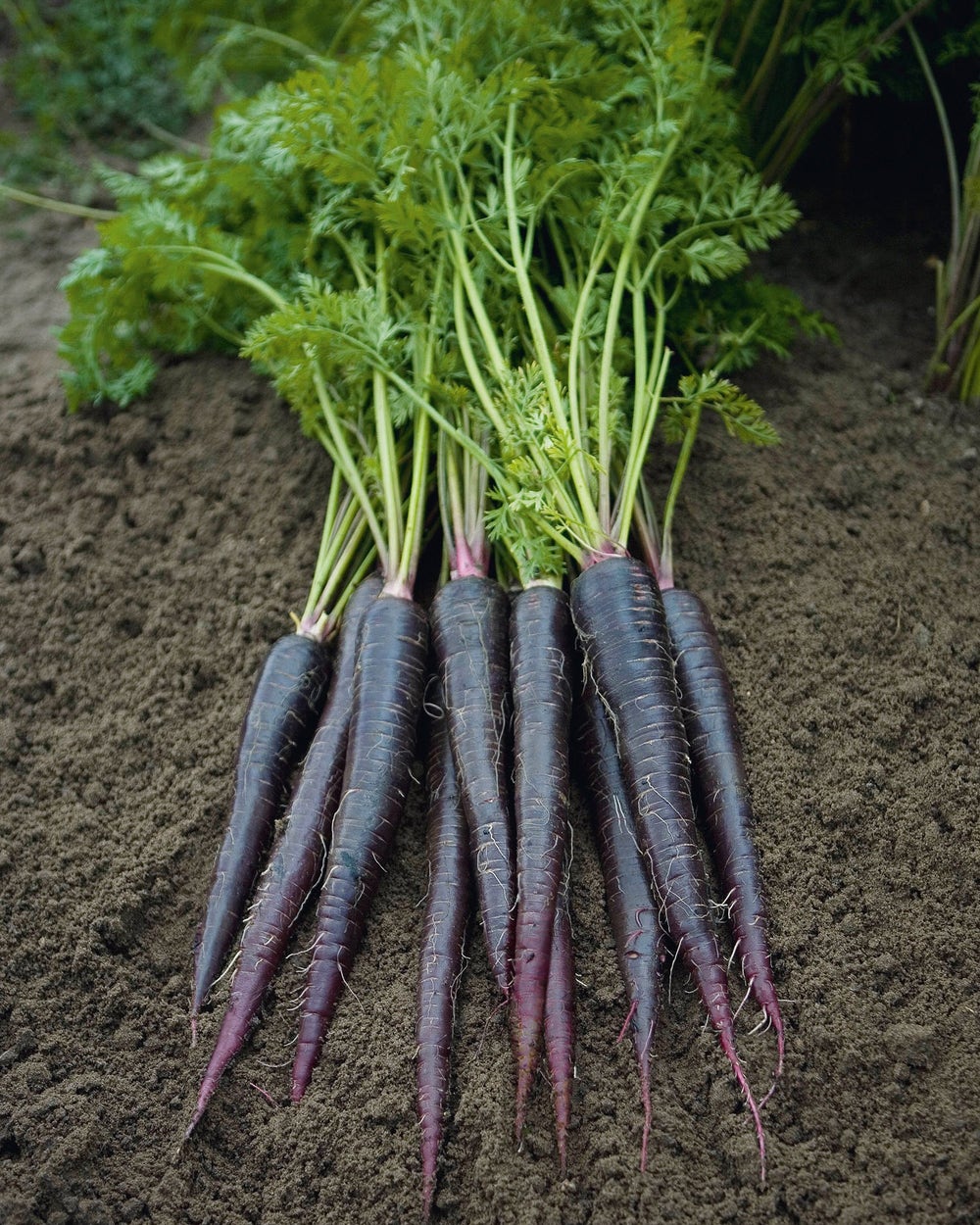
- Deep Purple Hybrid Carrot — Perfectly purple feast of color. Source: Burpee

- Black Magic Kale — Unique, dark leaves. Source: Eden Brothers
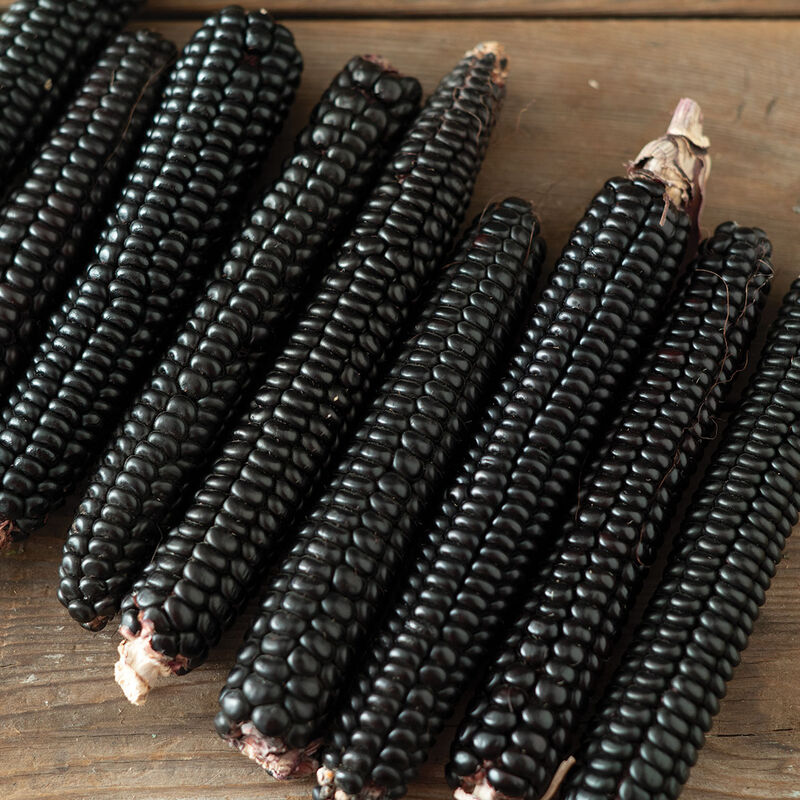
- Montana Morado Maize — Corn the color of midnight. Source: Johnny Seeds
Grasses & Ground Covers

- Andropogon Blackhawks — Long-lived, ornamental grass with foliage that emerges deep green to dark purple in spring deepening to near black by fall. Source: Bluestone Perennials
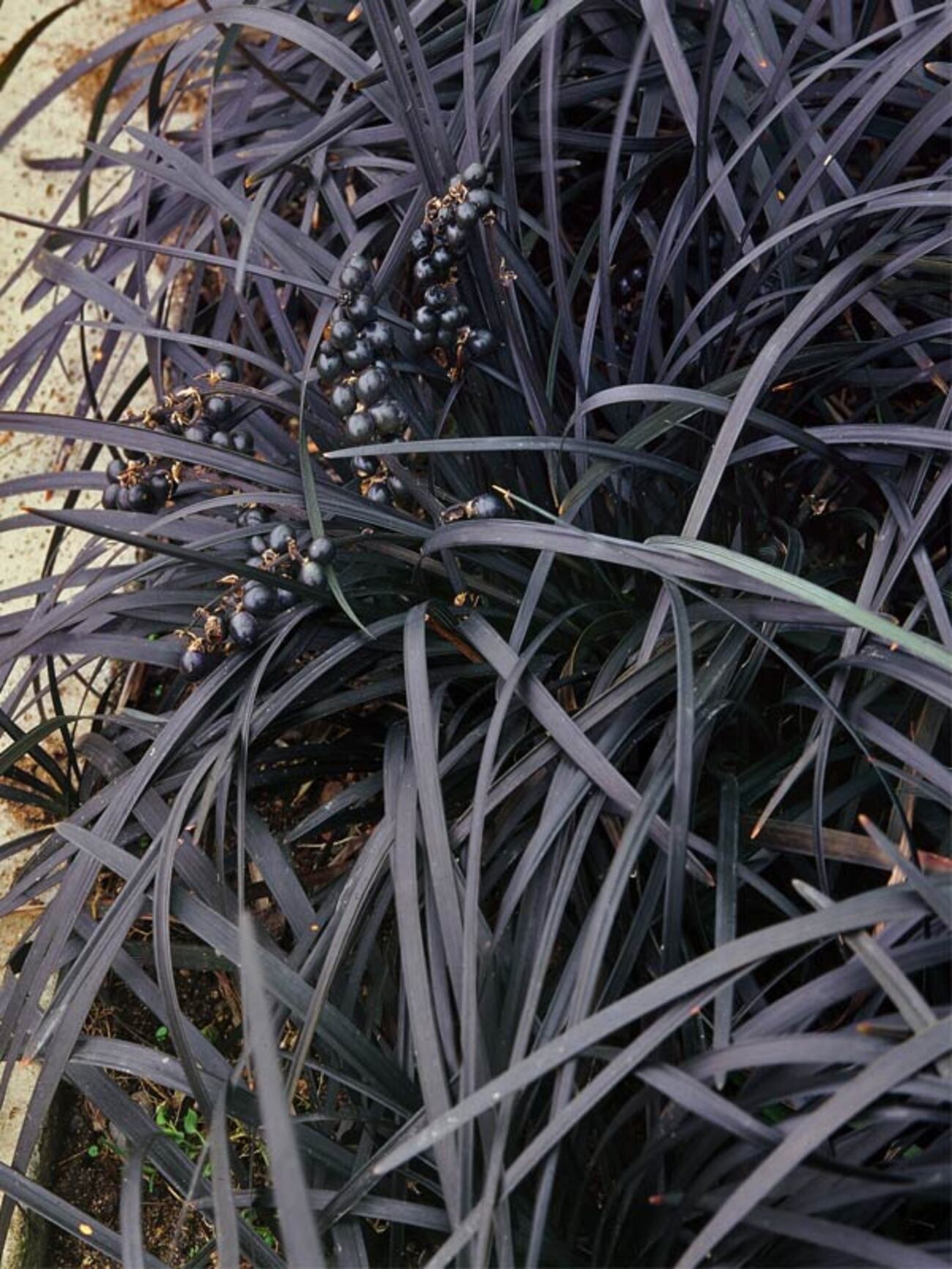
- Ophiopogon Nigrescens — Deepest purple-black shades on grass-like blades. Source: Bluestone Perennials

- Black Scallop Ajuga — Color is nearly black and leaves are also delightfully scalloped. Source: White Flower Farm

- SolarPower Black Heart Sweet Potato Vine — Nearly black, heart-shaped foliage on neatly mounding plants. Source: White Flower Farm
Bonus: Designing Your Shadow Garden 🌙
While you can scatter these plants throughout an existing garden, designing a dedicated shadow garden can create a more cohesive, enchanting effect. Here are a few design tips:
Anchor with contrast: Plant your darkest flowers and foliage (like tulips, bat flowers, or black scallop ajuga) against lighter backdrops or silvery-leaved plants for dramatic effect.
Layer heights: Place tall, dramatic plants like hollyhock and eggplant toward the back, with groundcovers (ajuga) spilling at the edges.
Seasonal interest: Mix perennials like columbine and tulips with annual vegetables and herbs for continuous waves of moody beauty.
Add atmosphere: Incorporate dark planters, wrought iron trellises, or fairy lights to enhance the mysterious, magical vibe.
Whether you’re drawn to the gothic romance of black tulips or the witchy appeal of purple basil, a shadow garden brings a little book-inspired magic to your outdoor space.
✨ Which of these plants would you include in your shadow garden? Let me know in the comments below. And don’t forget to listen to our full Romance on the Rocks episode for my review of In the Shadow Garden! You can also read my in-depth “book report” here.


